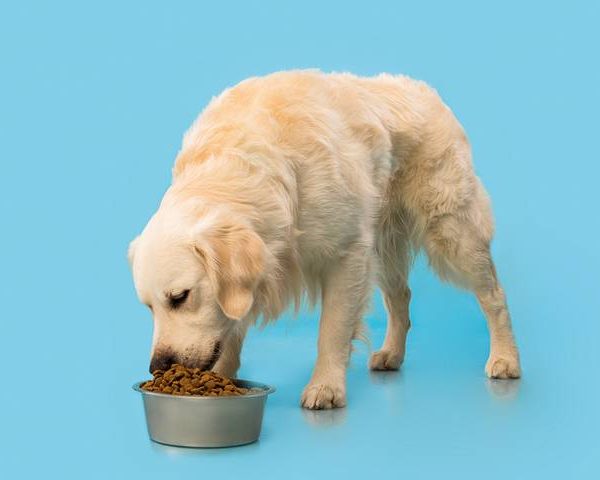
How to Get My Dog to Chew His Food
We’ve all seen our dogs do it. They can’t wait for you to fill their bowls, and then as fast as it takes to pour out the food, they gulp it down. How can they enjoy it when it’s barely chewed? A dog’s esophagus is designed to expand five times its size to swallow large chunks of food, and their stomach acid breaks it down easily.
It would be nice if your dog could slow down and savour its food. Maybe they are less likely to throw up or get or have gastrointestinal discomfort. It can also prevent swallowing air and fluid and swelling the stomach.
What can you do? Let’s go over seven strategies to get your dog to chew his food.
Reduce the dog’s anxiety levels.
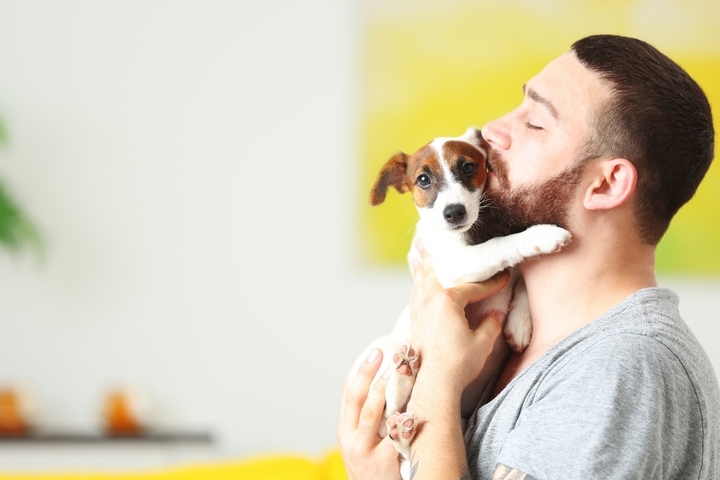
Just like most other living beings, dogs get stressed. Dogs can panic eat, and it could be from chaos in the home or other dogs sharing food. They need to be relaxed before mealtime, slowly slowing it down.
Try to create a stress-free environment for your pet, so they keep calm. This ease of tension shows that they are safe. Animals can sense stress, and if there is tension in the air from different family dynamics, they can react negatively to it. Give them lots of love and attention, knowing they are safe and sound.
Feed dogs separately.
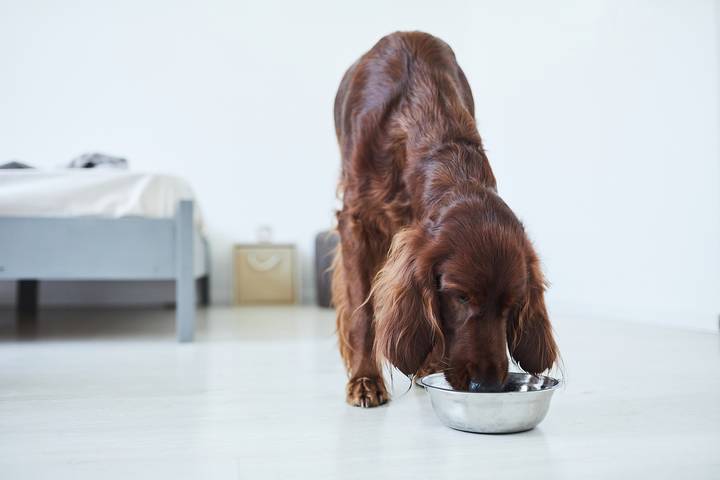
If you have more than one dog, this could be contributing to the problem. Dogs inherited the wolf, pack animal mentality where they think they have to compete for food and need to eat quickly to get their share. This makes eating more panic, and they “wolf” it down fast.
Consider separating your dogs and feeding them alone so they don’t sense the urgency as much. Over time they will understand that it isn’t a competition and will eat slower.
Combine natural food with regular dog food.
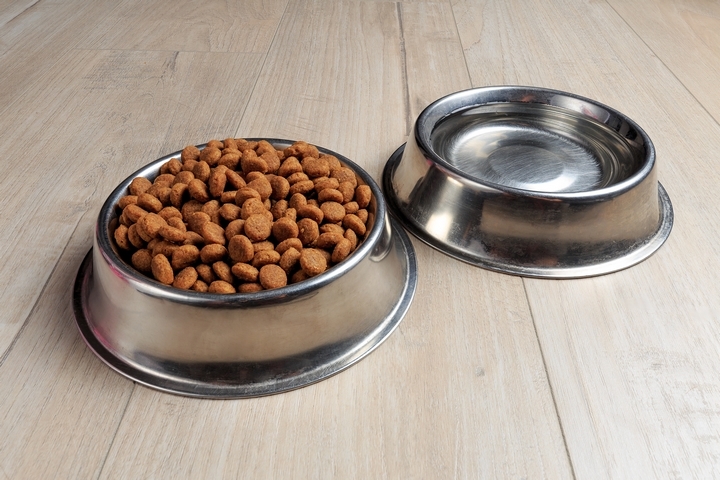
Your dog usually just wants to fill his stomach, and some dog food is bland. Try adding some raw dog food into his diet alongside the dry stuff.
There are many different kinds of food that dogs enjoy and are beneficial to them. Crack a raw egg on top of the kibbles and put in some meat like chicken, beef, pork or salmon. Vegetables are good too and some fruit they enjoy. This can spark their interest in food and make it more enjoyable while giving them more natural nutrition.
Tire the dogs out.
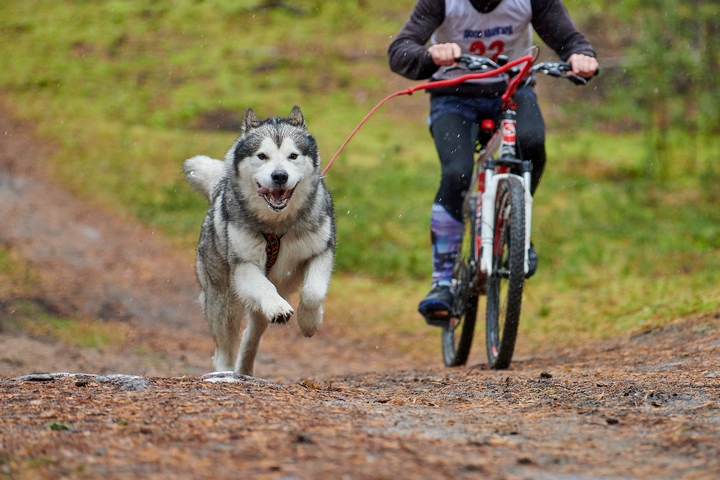
In today’s busy world, we are on the go from morning to night. With parents working, kids at school and then everyone rushing around from soccer practise to gymnastics, our poor dogs are left indoors too much. This pent-up energy makes them panicky, and everything they do will be at a rapid pace.
Take some time and get your best friend outside to run around the park. This is good for everyone because it will give you and your fresh dog air, exercise and allow the day’s stresses to fade away. Do this before his dinner, and he will feel much calmer and maybe a little worn out. He will eat slower and enjoy the food more.
Place a ball or smaller bowl in his food dish.
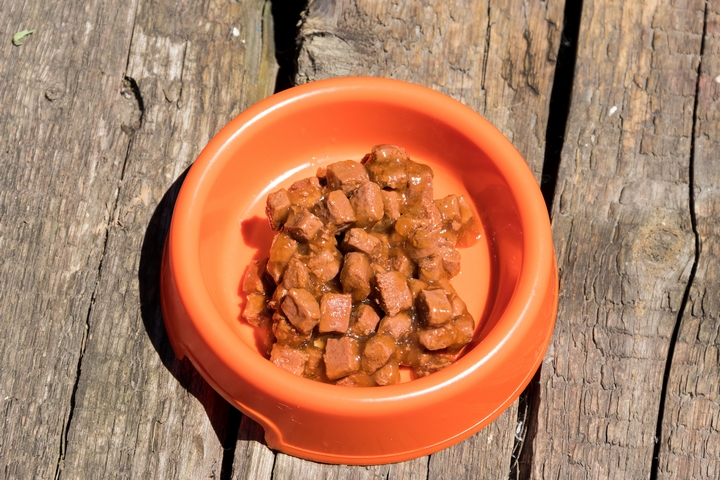
This is an effective trick to get your dog to slow down his eating. Most food is smaller than a ball, so it’s harder for him to get a mouthful. He has to navigate around the ball to get little pieces of food, which slows the whole process down.
Another method is putting an upturned smaller bowl in the dish. This pushes the food to the outside, and he has to eat around the edges.
Feed the dog more often.
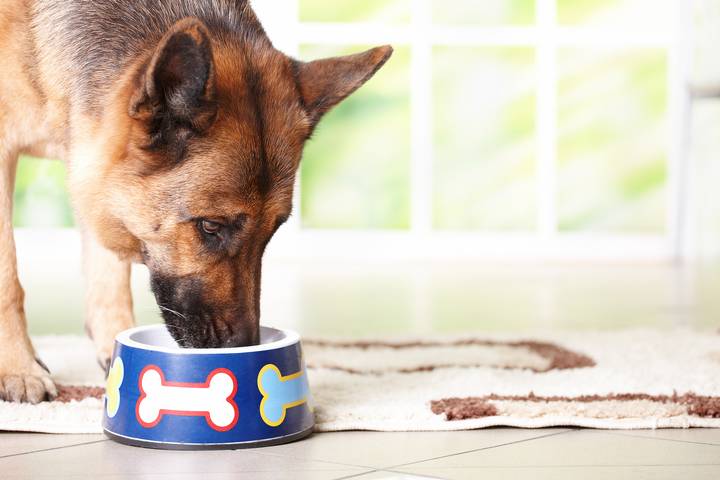
This is a good strategy that works. Instead of a few large meals a day, underfeed him more meals. He will be forced to eat less and wait for another meal. You can also use this as an opportunity to feed him natural food by itself like oatmeal, fruits or vegetables.
Switch up the dog’s food completely.
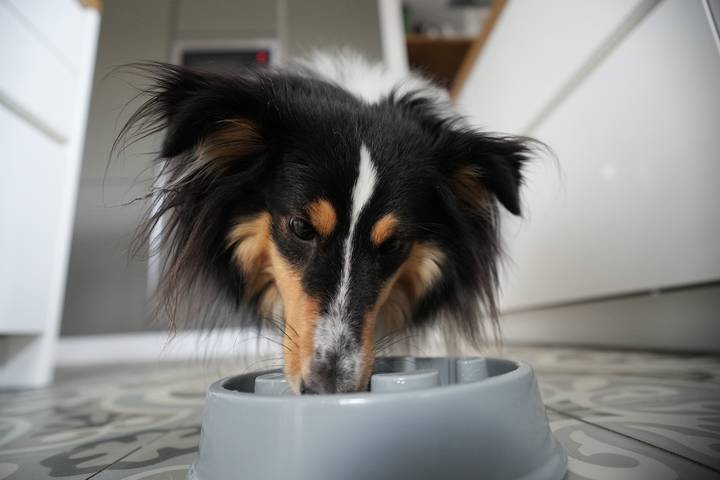
It could be that your dog needs a diet change. Consider feeding your dog raw food for a change. This is very beneficial for them, and they will enjoy it. Some companies specialize in preparing biologically appropriate food with healthy protein and many vitamins and minerals. You will see your dogs’ health improve and make them happier, healthier pets.
Ultimately, your dog eats in a naturally intuitive way because its body is designed to process food differently than ours. These seven strategies allow your dog to slow down and chew his food more. This is a sure sign he feels safe and calm, which is what you want for him.
